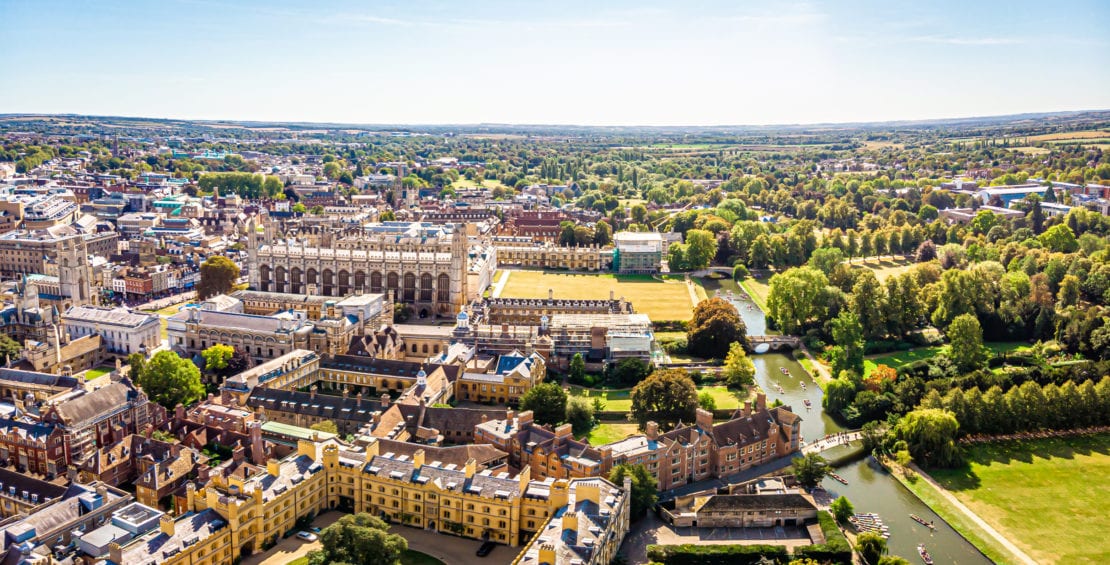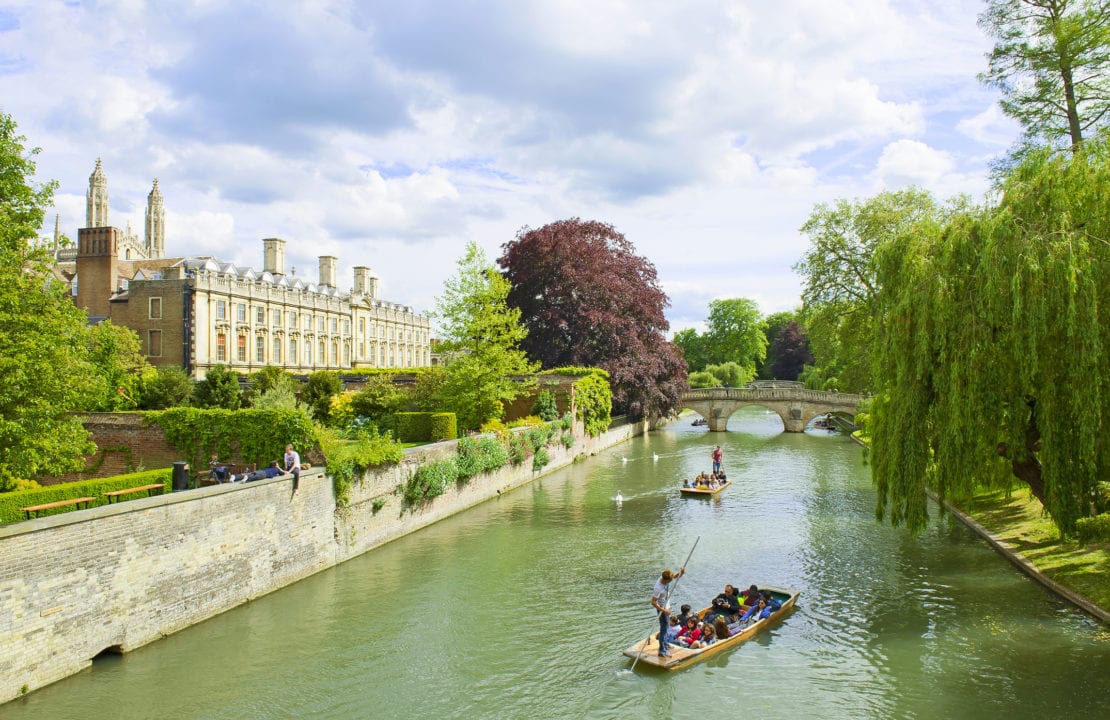When it comes to university towns, Cambridge stakes its claim as one of the best. With history and tradition at every turn, it’s a city with an academic rep like no other (aside from Oxford perhaps, but we don’t talk about them), where great minds of the past go head-to-head with new generations of the intellectually inclined.
Set amongst a backdrop of cobbled streets, lush green lawns and college buildings that are as grand as they get, Cambridge provides a student experience that’s tough to compare.
If you’re planning on studying in this storied university city, then let our guide get you up to speed on its incredible history, as well as a selection of things to see and do during your time here!
A brief history of Cambridge
- The modern city of Cambridge was founded in 875 when the Danes conquered Eastern England. Upon this site, they created a fortified town called a burgh – which is where we get the word borough
- In the 10th century, Cambridge was captured by the Saxons. Not long after, returning Danes set fire to its thatched roof buildings, burning it to the ground. However, a period of rebuilding soon saw Cambridge flourish.
- In 1025, the Church of St. Benet was built. Still standing today, it’s the oldest building in the town.
- By the time of the Domesday Book in 1086, Cambridge grew to a population of about 2,000 – a medium-sized town by the time’s standards.

- By the 13th century, Cambridge prospered thanks to its location on the River Cam. Since it flowed through Kings Lynn – another large, important town back then – Cambridge benefitted from the transportation of goods on this waterway.
- Like much of the country, the place was ravaged by severe bouts of the Plague in the 1600s, with a particularly extreme case occurring in 1630.
- Cambridge bounced back in the 18th century, setting up its own newspaper in 1744, a hospital in 1766, and its first bank in 1780. By 1845, it was even connected to London by railway – opening itself to a huge market.
- Despite its impressive reputation and academic lineage, Cambridge was finally made a city in 1951.
Weird and wonderful facts about Cambridge
- 89 Nobel Prizes have been awarded to people associated with Cambridge University (29 of those are in physics). By comparison, Oxford has a measly 58.
- Cambridge is the birthplace of football! Drawn up in 1863, its “Cambridge Rules” went on to influence the Football Association’s original rules, and included things such as no carrying the ball, no “hacking” (kicking the shins) and no loitering between “the ball and the adversaries’ goal” – an early version of the offside rule.
- Understandably miffed that students couldn’t keep dogs in their rooms, it was reported that the poet Lord Byron kept a bear in his room instead!
- The settlement’s original name was Grantabrycge, which meant bridge over the river Granta. As the name changed to Cambridge, so too did the name of the river, which became known as the Cam.
- In more recent times, the city has become known as Silicon Fen because of its reputation and influence amongst the technology industry in the UK. Up to 3,000 tech and science businesses are based here.
- Here’s a weird one: Oliver Cromwell’s head is buried in a secret location here. After dying in 1658, Charles II had his body exhumed and formally executed. His head was displayed on a spike for nearly 25 years until a storm broke it. The skull was then passed through lots of private collectors until it was eventually buried in an unknown location in 1960, and its whereabouts remain unknown.

Things to do in Cambridge
- For that classic Cambridge student experience, take in all its scenic glory with a spot of punting on the River Cam. If water’s not your thing, then its surrounding green lawns make an excellent place to chill out and escape from things for an hour or two.
- If you’re in the mood for some more culture, then the Fitzwilliam Museum is one of Cambridge’s best. Right in the city’s centre, it’s home to more than half a million pieces of art from around the world, including Egyptian coffins and Impressionist icons, as well as Renaissance sculpture and Asian masterpieces.
- After five days of lectures and seminars, say hello to the weekend with a drink or three at 196, one of the city’s best-loved bars. With a great selection of food and drinks and a chilled-out atmosphere, this artsy bar is always a highlight on Saturdays.
- For some alfresco entertainment in the summer, Grantchester meadows transforms into an outdoor cinema, showing everything from timeless classics to more recent blockbusters; it’s the perfect place for balmy evenings with your flatmates. Plus, Grantchester meadows makes a prime location for a spot of stargazing after the credits have rolled too!
- The city’s botanic gardens are tailor-made for outdoor types, packed with all kinds of exotic plants, greenhouses laden with vibrant flowers, and makeshift tropical climes. Whether you’re here to learn about flora and fauna or just fancy a relaxed stroll in some of the city’s most beautiful gardens, they’re well worth seeing for yourself.
Of course, this is just a taste of what Cambridge has to offer. You can find more of the city has in store, here.
If you’re looking for a student living experience that offers more, head over to Nido Student to see our global properties or drop us a line on 0207 1000 100 for more information.